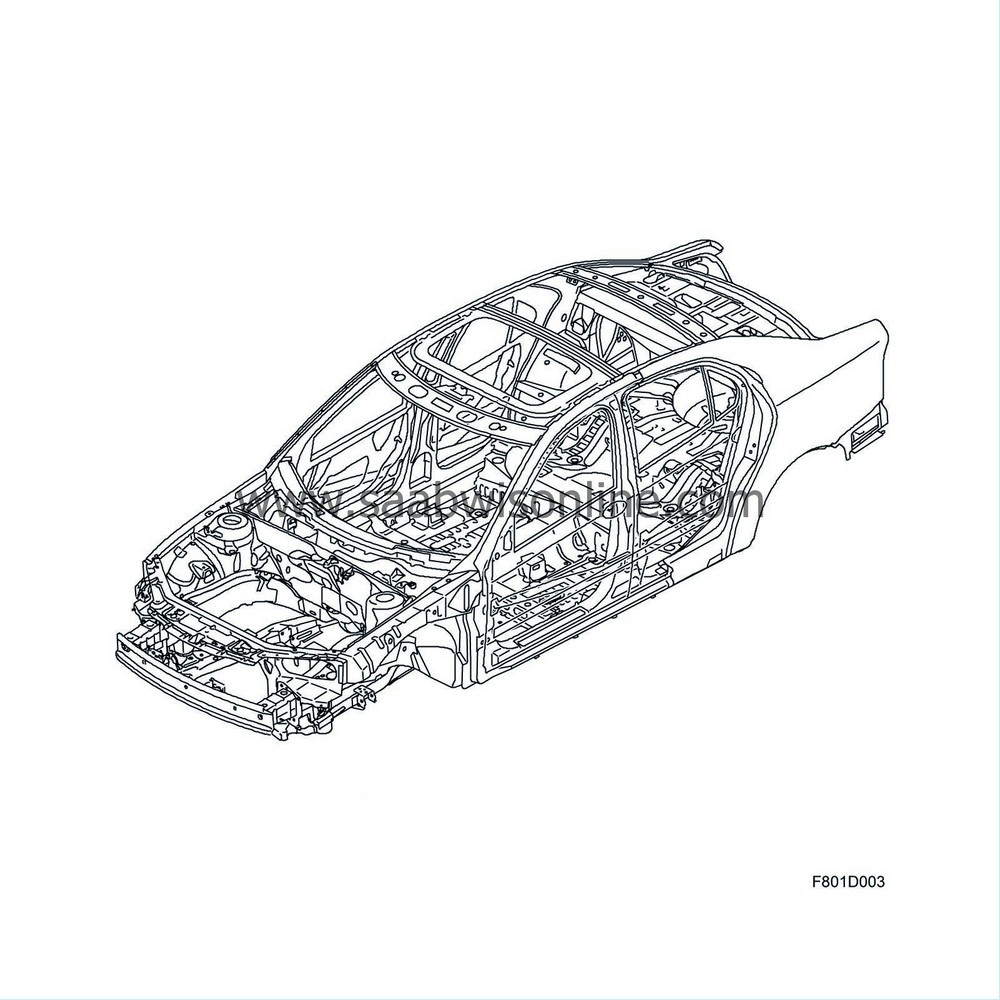Brief description
| Brief description |
| Body design |
The Saab 9-3 Sport Saloon body is characterized by a high torsional stiffness, a stable cabin frame, large deformation zones front and back and very effective side impact protection.
| Impact safety |
The body of the Saab 9-3 Sport Saloon is designed to create a survival zone for the driver and all passengers in the event of a collision. The large forward deformation zones are constructed so that their behaviour during deformation is stable and robust.
The most important component in case of a side impact is the B-pillar. This is extremely stiff in the middle and slightly softer in its upper and lower sections. This results in the B-pillar acting as a pendulum and distributing forces via the sill into the car.
The front doors have angled door members to direct the forces of an impact to the B-pillar and increase the pendulum effect. The doors also incorporate foam spacers that are designed to increase their rigidity and prevent them deforming into the cabin in the event of a side impact.
| Reinforcement |
The body is provided with reinforcements in the areas that are most vulnerable in case of a collision. Certain reinforcements are manufactured from high-strength steel.
| High-strength steel |
The majority of reinforcements are made of high-strength steel (HSS) to make the passenger enclosure as sturdy as possible. Some reinforcements are made of so-called ultra high-strength steel.
| Galvanized body parts |
Most of the body on the Saab 9-3 Sport Saloon is zinc plated. Only a few sheet metal components inside the body are not zinc plated.
| Sound insulation |
In addition to the sound insulation panels in the body, a special foam sound insulator is used below the rear door windows, in the luggage compartment, in front of the rear wheel housings and in the A, B and C-pillars.



